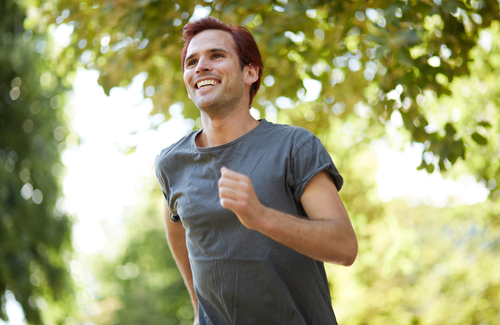Statin treatment and physical exercise – including resistance training and cardiovascular workouts – has a range of benefits for HIV-positive people with high blood lipids, according to Brazilian research published in Medicine & Science in Sports & Exercise. Statins and exercise were individually beneficial, but the very best results were seen in individuals who combined the two. Lipids were reduced, as were markers of inflammation associated with an increased risk of cardiovascular disease, while body composition, cardiovascular fitness and muscle strength also improved.
“This is the first study to evaluate the association of statins and exercise training in people living with HIV with dyslipidemia,” write the authors. “Although the results suggest an isolated intervention with statins or exercise training showed positive results, the combination of both was more effective.”
Cardiovascular disease is a major cause of serious illness and death among people with HIV. Reasons include the ageing of the HIV-positive population, the inflammatory effects of untreated HIV infection, lifestyle factors such as smoking, and also the side-effects of some antiretroviral drugs.
Treatment with statins can lead to improvements in lipids and also reduces systemic inflammation – both implicated in cardiovascular disease risk. Statins have been shown to be safe and effective in people living with HIV. Previous research has also shown the benefits or physical exercise for individuals with HIV. These include reductions in lipids, improvements in inflammatory markers and also increases in lean body mass, muscle strength and cardiovascular fitness.
Studies involving HIV-negative people have shown that combining statin therapy with an exercise regimen improves lipid and inflammatory profiles, while simultaneously improving physical fitness.
Investigators led by Dr Hugo Ribeiro Zanetti wanted to see if combining statins with physical exercise had similar benefits for HIV-positive adults with high blood lipids. They therefore designed a double-blind, placebo-controlled study involving 83 adults receiving care at the infectious disease clinic at the Federal University of Triânglo Minerio in Uberaba, Brazil.
All the participants had been taking antiretroviral therapy for at least a year and had an undetectable viral load. They also had confirmed dyslipidaemia (triglycerides of at least 150 mg/dL; total cholesterol of at least 190 mg/dL; LDL cholesterol of at least 130 mg/dL; and HDL cholesterol below 40 mg/dL).
Participants were randomised into one of four groups: placebo; statins; exercise plus placebo; exercise plus statins.
Statin therapy consisted of a single daily pill containing 10mg rosuvastatin. Exercise regimens involved a combination of resistance training and treadmill sessions three times a week. Exercise intensity gradually increased over the 12 weeks of the study.
At baseline and at the conclusion of the research the participants underwent a range of tests. These included assessment of body composition, blood lipids, cardiovascular and inflammatory markers, carotid artery ultrasound, muscle strength and cardiorespiratory fitness.
The average age of participants was 42 years. Most (51%) were male and white (72%). Hypertension was present in 22%, a quarter were diabetic and 31% were smokers. The mean BMI was 24kg/m2 – firmly in the overweight category.
There were no significant baseline differences between the four study groups.
Eleven participants (13%) withdrew during follow-up.
BMI remained comparable between all four groups at the end of the study. However, improvements in lean body mass and body fat percentage were seen in the groups randomised to undertake physical exercise. Similar improvements were not observed in the placebo and statins-only groups. (These improvements, and all those reported below, were statistically significant.)
Improvements in all lipid parameters were observed in the statins, exercise/placebo and exercise/statins arms. Moreover, improvements in total cholesterol and triglycerides among the exercise/statins group exceeded those observed in the statins and exercise/placebo study arms.
When compared to the placebo arm, major reductions in inflammatory markers were recorded in the statins, exercise/placebo and exercise/statins groups. The exercise/statins group showed decreases relative to the exercise/placebo and statins arms.
There were reductions in markers of cardiovascular risk in the statins, exercise/placebo and exercise/statins groups compared to the placebo arm.
“The present study…confirms that an intervention with statins, exercise training, and the combination of both have a positive effect on lipid levels confirmed by comparison with the placebo group,” comment the authors. “The present results also demonstrate that exercise training is an effective non-pharmacological intervention for improving the lipid profile of people living with HIV independently of statin use; the mechanisms responsible for this improvement are related to enhanced lipid metabolism.”
The findings of ultrasound examination of the carotid artery also favoured the statins, exercise/placebo and exercise/statins group compared to the placebo arm, with the exercise/placebo and exercise/statins groups having advantages over both the placebo and statins arms.
Strength in all major muscle groups improved among participants in the exercise/placebo and exercise/statins arms. Similarly, individuals in the exercise groups experienced improvements in their cardiorespiratory fitness.
The study only lasted for three months. Therefore, further research is needed to see if the benefits observed by the investigators are sustained in the long term.
“The present findings show that the combination of exercise and statins is useful to control the lipid and inflammatory profiles, reduce cardiovascular disease markers, and improve ultrasound findings, muscle strength and cardiorespiratory fitness in people living with HIV with dyslipidemia,” conclude the authors.
Zanetti HR et al. Effects of exercise training and statin use in people living with HIV with dyslipidemia. Medicine & Science in Sports and Exercise, online edition, doi: 10.1249/MSS.0000000000002120, 2019.

